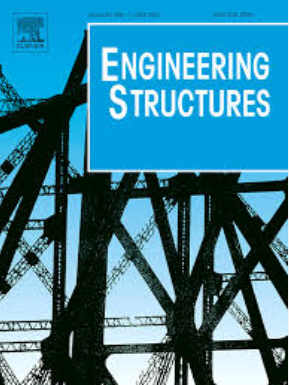钢纤维加固板的冲剪优化设计:机器学习与进化预测模型
IF 5.6
1区 工程技术
Q1 ENGINEERING, CIVIL
引用次数: 0
摘要
本研究论文的重点是利用人工神经网络(ANN)、多目标遗传算法进化多项式回归(MOGA-EPR)和基因表达编程(GEP)来预测钢纤维增强混凝土(SFRC)板的冲剪强度。为了进行预测,研究人员利用一个数据集进行了研究和分析,该数据集包括影响冲切剪切强度的几个参数,包括使用 ANN、GEP 和 MOGA-EPR 方法预测 SFRC 板的纵向和横向冲切剪切强度。开发的模型表现出非常好的性能,软计算技术(GEP 和 MOGA-EPR)的 R² 值为 0.91 至 0.93,而 ANN 技术的 R² 值更高,达到 0.95。此外,还结合了两个案例研究,对模型在实际应用中的成本进行了分析。结果表明,机器学习(ML)模型在降低材料成本方面的效率相对较高,因为它们能够比代码采用的标准方法做出更好的预测。本文章由计算机程序翻译,如有差异,请以英文原文为准。
Optimized punching shear design in steel fiber-reinforced slabs: Machine learning vs. evolutionary prediction models
This research paper focuses on utilizing Artificial Neural Networks (ANN), Multi-Objective Genetic Algorithm Evolutionary Polynomial Regression (MOGA-EPR), and Gene Expression Programming (GEP) to predict the punching shear strength of Steel Fibre-Reinforced Concrete (SFRC) slabs.
In order to formulate predictions, research and analysis were carried out making use of a dataset, this dataset included several parameters that impact on punching shear strength, including SFRC slabs longitudinally and transversely, using ANN, GEP, and MOGA-EPR methods. The developed models exhibited very good performance, as the soft computing techniques (GEP and MOGA-EPR) achieved R² values of 0.91 to 0.93, while the ANN technique was higher at 0.95. Furthermore, two case studies were incorporated to carry out cost analyses of the models in real-world applications. It was shown that the efficiency of the Machine Learning (ML) models in reducing the costs of materials is relatively high, as they were capable of better predictions than the standard methods employed by the codes.
求助全文
通过发布文献求助,成功后即可免费获取论文全文。
去求助
来源期刊

Engineering Structures
工程技术-工程:土木
CiteScore
10.20
自引率
14.50%
发文量
1385
审稿时长
67 days
期刊介绍:
Engineering Structures provides a forum for a broad blend of scientific and technical papers to reflect the evolving needs of the structural engineering and structural mechanics communities. Particularly welcome are contributions dealing with applications of structural engineering and mechanics principles in all areas of technology. The journal aspires to a broad and integrated coverage of the effects of dynamic loadings and of the modelling techniques whereby the structural response to these loadings may be computed.
The scope of Engineering Structures encompasses, but is not restricted to, the following areas: infrastructure engineering; earthquake engineering; structure-fluid-soil interaction; wind engineering; fire engineering; blast engineering; structural reliability/stability; life assessment/integrity; structural health monitoring; multi-hazard engineering; structural dynamics; optimization; expert systems; experimental modelling; performance-based design; multiscale analysis; value engineering.
Topics of interest include: tall buildings; innovative structures; environmentally responsive structures; bridges; stadiums; commercial and public buildings; transmission towers; television and telecommunication masts; foldable structures; cooling towers; plates and shells; suspension structures; protective structures; smart structures; nuclear reactors; dams; pressure vessels; pipelines; tunnels.
Engineering Structures also publishes review articles, short communications and discussions, book reviews, and a diary on international events related to any aspect of structural engineering.
 求助内容:
求助内容: 应助结果提醒方式:
应助结果提醒方式:


